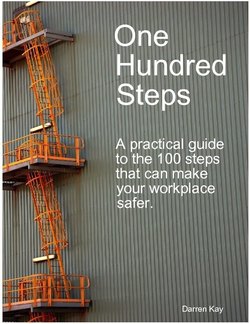Читать книгу One Hundred Steps: A Practical Guide to the 100 Steps That Can Make Your Workplace Safer - Darren Inc. Kay - Страница 10
На сайте Литреса книга снята с продажи.
4. Journal your OHS activity
ОглавлениеBuy a day to a page, hard backed, A5 diary. In this record absolutely everything you do, say or hear regarding OHS at your workplace.
Every organisation should be able to put something in it for each day. I suggest using the top half of the page to record issues as they arise (until you go electronic, you may want to reference accidents and incidents here); and use the lower part of the page to itemise everything (and I mean everything) you do in terms of workplace. Keep this diary on your desk, and make a point of visiting it at the end of your working day.
I would include a note on any conversations in the hallway, canteen etc. that link to OHS, any signs purchased and put up; any observations you make as you go about your work, and suggestions you make to employees about their work activities. For example, even if its “looked at safety signs on-line, and ordered a wet floor sign”. This could make all the difference if an employee slips on a wet floor and you get taken to court. You can at least identify that this issue was in the process of being rectified. Or “Saw Bob carrying heavy box between sheds, suggested he used a trolley to move the load, he chose not to” again, when Bob takes time off work for a sore back, you can point to prior personal negligence. Not that this exercise is entirely about shifting blame, as it does have very positive features such as recording a workplace inspection date, and placing the next one in at a future date. Or recording First Aid training for a staff member, so you can go back and check the date when it comes to refresher training requests.
What to do right now: Order that diary.
